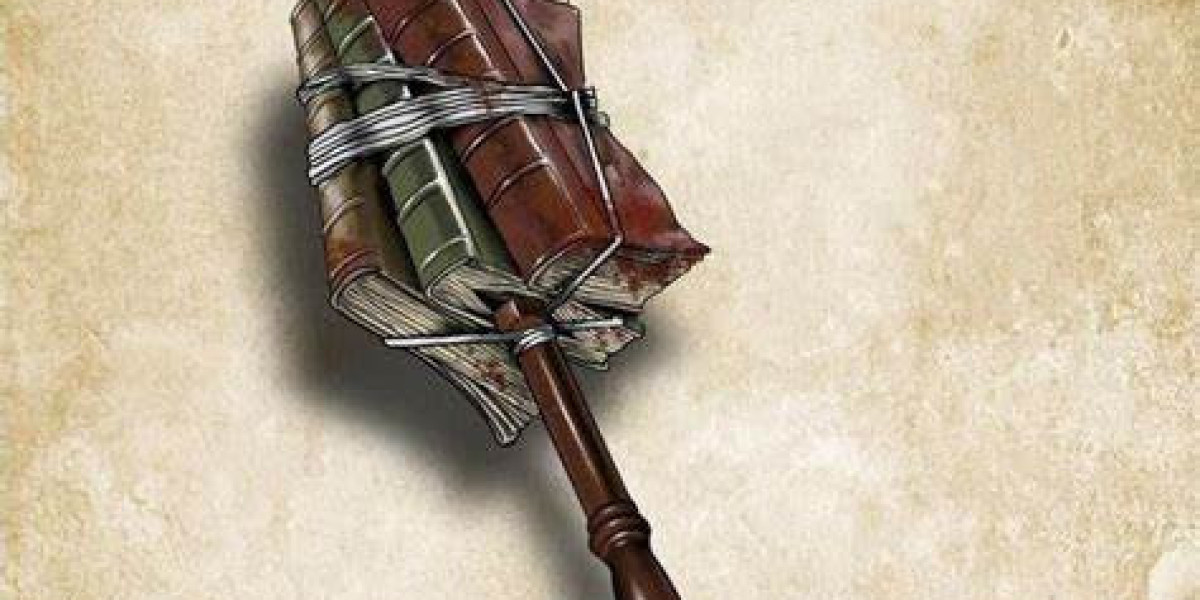Magic items have always been a staple of Dungeons & Dragons (D&D), adding depth, excitement, and a touch of fantasy to gameplay. In D&D 5th Edition (5e), magic items are categorized by rarity, with "uncommon" items often serving as the bridge between basic gear and more powerful artifacts. This article will delve into the characteristics, examples, and uses of uncommon magic items, showcasing how they can enhance the gaming experience.
What Are Uncommon Magic Items?
Uncommon magic items are those that can significantly enhance a character's capabilities without being overly powerful. According to the Dungeon Master’s Guide, these items are typically found in treasure hoards, sold in magical shops, or granted as rewards for completing quests. They represent a level of enchantment that is accessible but still special enough to feel rewarding. These items often have a market price ranging from 101 to 500 gold pieces, making them relatively affordable for adventurers who have accumulated some wealth.
Characteristics of Uncommon Magic Items
Accessibility: Uncommon items are generally easier to acquire compared to rare or very rare items. Dungeon Masters (DMs) can introduce these items as part of the loot in various adventures, making them an integral part of character progression.
Variety: There is a wide range of uncommon magic items, from weapons and armor to potions and rings. This variety allows DMs to customize their campaigns according to the needs and themes of their adventures.
Balanced Power Level: While these items grant advantages, they do not overshadow character abilities or party dynamics. They are designed to complement the existing capabilities of characters, encouraging players to think strategically about their use.
Roleplaying Opportunities: Uncommon magic items can lead to interesting roleplaying scenarios. For example, an item with a unique backstory can add depth to the campaign and foster interactions between characters and NPCs (non-player characters).
Examples of Uncommon Magic Items
Here are some notable examples of uncommon magic items, including their effects and potential uses in gameplay:
Bag of Holding:
- Description: This classic item is a small, durable bag that can hold a significant amount of weight while remaining light. It can store up to 500 pounds of gear without adding to the wearer's encumbrance.
- Usage: Ideal for adventurers who need to carry large amounts of loot, this item encourages strategic planning regarding inventory management. It can also facilitate creative solutions during exploration and problem-solving scenarios.
Cloak of Elvenkind:
- Description: This finely crafted cloak enhances the wearer’s stealth abilities. When worn, it provides advantage on Dexterity (Stealth) checks and allows the wearer to attempt to hide even when only lightly obscured.
- Usage: Perfect for rogue or ranger characters, this cloak enhances sneaky playstyles, allowing players to engage more in tactics and stealth missions. Its magical properties can add intrigue to infiltration quests or encounters requiring subtlety.
Bracers of Defense:
- Description: These bracers provide a boost to a character’s Armor Class (AC) when they are not wearing armor or using a shield. Specifically, they grant a +2 bonus to AC.
- Usage: Ideal for spellcasters or characters who prefer to rely on Dexterity, these bracers encourage creative character builds. They can also lead to tactical decisions, such as when to forego armor for the sake of maintaining spellcasting abilities.
Gauntlets of Ogre Power:
- Description: These gauntlets increase the wearer’s Strength score to 19 while wearing them. This boost allows characters to perform physical feats they might not otherwise achieve.
- Usage: Melee fighters and characters who focus on Strength-based skills can greatly benefit from these gauntlets. They can change the dynamics of combat encounters and allow players to interact with the environment in new ways, such as lifting heavy objects or breaking down doors.
Potion of Greater Healing:
- Description: This potion allows the drinker to regain 4d4 + 4 hit points when consumed, providing a substantial healing boost.
- Usage: Healing potions are a staple of D&D, but the greater healing variant can turn the tide in tough battles. Players can use these potions strategically during encounters to ensure they stay in the fight.
Using Uncommon Magic Items in Your Campaign
Incorporating uncommon magic items into your campaign can enrich the experience for both players and DMs. Here are some tips for effectively using these items:
Tailor to Characters: Consider the unique traits and backgrounds of your players' characters when introducing magic items. Tailoring items to individual characters can enhance their personal story arcs and increase their investment in the campaign.
Create Unique Variants: While the Dungeon Master’s Guide provides standard versions of magic items, creating unique variants with distinct properties can add originality and excitement. For instance, a Cloak of Elvenkind could be imbued with a history related to a specific elven clan, providing additional lore for players to explore.
Encourage Trade and Economy: Uncommon magic items can serve as valuable commodities in a campaign. Encourage players to trade items, develop relationships with merchants, or even create their own magical items, fostering a dynamic economy in your world.
Integrate Into Quests: Incorporate the search for uncommon magic items into the narrative of your campaign. Quest-givers can offer rewards of these items for completing tasks, and they can become the focal point of entire adventures.
Use as Story Hooks: Uncommon items can come with their own backstories or curses, providing ample opportunities for storytelling. For instance, a cursed item may require the players to embark on a quest to lift the curse or learn its history.
Conclusion
Uncommon magic items play a significant role in enriching the Dungeons & Dragons 5e experience. They enhance character abilities, foster creativity, and offer a myriad of roleplaying opportunities. By understanding their characteristics and effectively integrating them into campaigns, both DMs and players can enjoy a more immersive and engaging gameplay experience. Whether it’s a Bag of Holding to carry treasures or a Cloak of Elvenkind for stealthy operations, these items contribute to the magic and wonder of the D&D universe.







